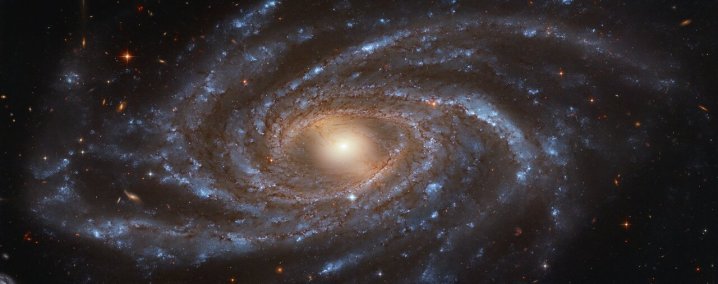
The Hubble Space Telescope has snapped yet another beautiful image of the wonders to be found out in the depths of space. This one shows the galaxy NGC 2336, a barred spiral galaxy located around 100 million light-years away. It is so picture-perfect that the Hubble scientists refer to it as “the quintessential galaxy.”
This galaxy is around 200,000 light-years across, making it twice as wide as our Milky Way galaxy which is around 100,000 light-years across. NGC 2336 also has long arms — the blue-tinted structures radiating out from its center. These arms include regions of star formation, where new young stars are being born when clouds of dust and gas collapse and collapse together due to the force of their gravity.
Young stars appear to glow blue because they burn at a higher temperature than older stars. These young stars burn through their fuel more quickly than the redder, older stars which are to be found in the center of the galaxy.
This particular galaxy is also notable for a Type 1a supernova which was observed there in 1987. Unlike other types of supernovae which occur when a massive star approaches the end of its life and its core collapses, Type 1a supernovae happen in systems with a pair consisting of a smaller star, similar in size to our sun, and a white dwarf. Though a smaller star wouldn’t normally go supernova, the white dwarf gives it a kick and creates a thermonuclear explosion even brighter than a core-collapse.
Type 1a supernova also generally give off a predictable amount of light, which means they can be used as markers for measuring the distance to a faraway galaxy or even calculating the size of the universe.
The supernova observed in 1987 was the first one to have been observed in this particular galaxy in the 111 years since its discovery in 1876.
Editors' Recommendations
- Hubble discovers over 1,000 new asteroids thanks to photobombing
- Stunning image shows the magnetic fields of our galaxy’s supermassive black hole
- Hubble images the spooky Spider Galaxy
- Hubble spots a massive star forming amid clouds of dust and gas
- Hubble spies baby stars being born amid chaos of interacting galaxies




